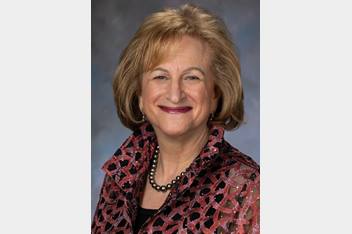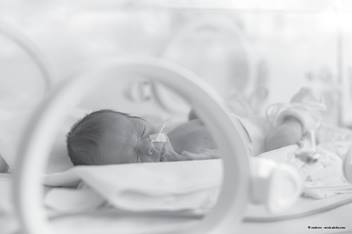Necrotizing Enterocolitis (NEC)

Necrotizing enterocolitis (NEC) (NEH-krow-tie-zing enter-oh-koe-LIE-tis) is a disease of the bowel (intestine) of newborn infants. The exact cause of NEC is not known. Usually, an infant with NEC is born early (premature) and has a low birth weight. When a baby has NEC, the lining of the bowel does not work. The lining of the bowel is needed for the baby to absorb food the right way.
Symptoms and Symptoms
Your baby may have some of these symptoms:
- A swollen, red or blue, hard belly
- Belly that is painful to the touch
- Not hungry
- Blood in the stool (poop)
- Diarrhea
- Vomiting
- Limp and tired
- Cannot keep milk down
- Changes in heart rate
- Fussier than normal
- Works hard to breathe or has periods of not breathing
- Temperature above 100.4° Fahrenheit (38.0° Celsius) or lower than 96.8° F (36.0° C)
- Temperature limit may vary based on your child’s age, diagnosis and any other factors.
Diagnosis
Your child may have these tests to help diagnose NEC:
- X-ray of the belly
- Blood or urine sample
- Spinal fluid samples – a needle is used to draw fluid from bottom of spine
Treatment
Depending on your child’s condition, they may have different treatments.
These could include:
- Rest and antibiotics for less severe cases. This will let the intestinal tissue recover.
- Your child should not be fed by mouth until the health care provider says it is okay. This is very important.
- A small tube, called a nasogastric (NG) tube or an oral-gastric (OG) tube, is passed from your baby’s nose or mouth into the stomach. The tube drains any fluid or air from the stomach and lets the bowel rest. Your baby usually will get antibiotics.
- Your baby will get special intravenous (IV) fluids through a central venous catheter (CVC) that will give nutrients while they are not eating. These fluids are called total parenteral nutrition (TPN) and intralipids (healthy fats).
Surgery
For more complicated cases, surgery may be needed to take out the damaged part of
the intestine.
- A small opening, called an ostomy, may be made in your baby’s belly. Then, part of the intestine is pulled through the ostomy to the outside. The ostomy lets your baby pass stool into a special pouch or bag while the bowel rests and heals.
- At times, during the hospital stay, the health care provider may order an upper GI test or a barium enema test to be sure the intestine is working right.
- Breast milk or formula is started slowly when the health care provider decides your baby can be fed again. This may be a slow process depending on how much bowel was removed and how quickly the rest of the intestine heals. Your baby will stay on TPN and intralipid IV fluids until they can get enough nutrients from milk or formula.
- Your infant may be able to go home with the ostomy. Later, when they are older and the intestine is healed, the healthy intestine is reconnected and the ostomy is closed. This is usually done weeks or months after the first surgery. Most children’s intestines work normally after the ostomy is closed.
If you have any questions, be sure to ask your health care provider.
Necrotizing Enterocolitis (NEC) (PDF)
HH-I-141 6/91, Revised 10/21 Copyright 1991, Nationwide Children’s Hospital


